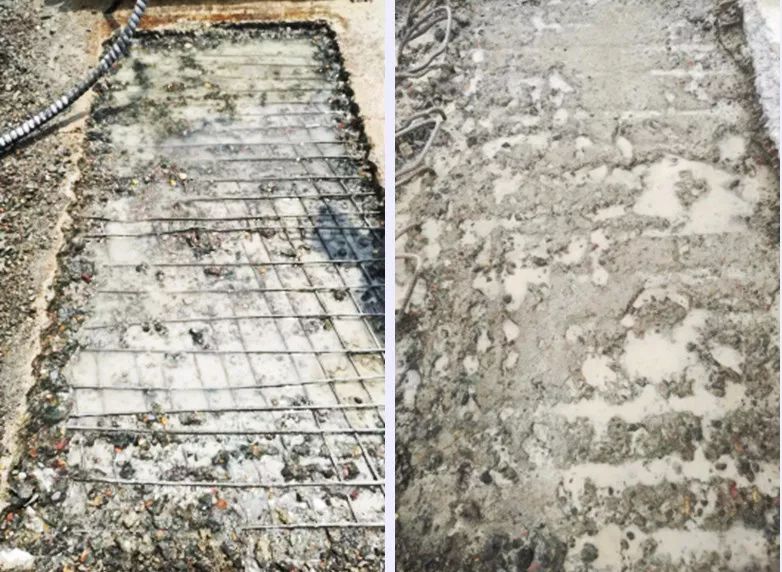Solidity and Art: In-depth exploration of concrete demolition technology
2024-09-26 15:28:53
Concrete is an indispensable material in modern architecture. It has won wide application due to its solidity and durability. But in some cases, the removal or demolition of concrete becomes necessary, whether it is due to building renovation, damage repair or other engineering needs. This article will explore concrete demolition technology in detail, from tool selection, methods to safety measures and the latest technological advances, and strive to present readers with a comprehensive picture of concrete demolition.
The necessity of concrete demolition
With the acceleration of urbanization, the frequency of building structure renewal and renovation is also increasing. In some cases, the structure of old buildings needs to be partially or completely demolished to make way for new construction projects. In addition, damage caused by natural disasters, aging of materials or human factors may also require the demolition and repair of concrete. In addition, expansion and changes in the industrial and infrastructure fields often involve the modification and removal of concrete components.
Commonly used concrete demolition tools and equipment
In concrete demolition operations, it is crucial to choose the right tools and equipment. Here are some commonly used demolition equipment:
1. Handheld tools: Hammers and chisels are the most primitive concrete demolition tools and are suitable for small-scale operations. Modern hand-held electric or pneumatic chisels can significantly improve efficiency.
2. Hydraulic shears: Suitable for cutting reinforced concrete structures, they are a powerful tool for demolishing reinforced concrete in buildings.
3. Impact drills: Through high-frequency vibration, impact drills can effectively demolish walls and ground concrete.
4. Hydraulic breaker: This equipment is often used for concrete demolition in large construction projects and can effectively strike heavy concrete.
5. Cutting saws: Including electric cutting saws and oil saws, they are often used to accurately cut concrete blocks for further demolition or cleaning.
Concrete demolition methods
Blasting method
The blasting method is to break the concrete structure through the impact pressure of the explosive. It is suitable for partial demolition of large buildings or bridges. Due to its strong destructive power, it needs to be implemented under highly controlled conditions to ensure the safety of the surrounding environment and personnel.
Chemical expansion method
Chemical expansion agent is a new type of demolition material that is filled into the cracks of concrete structures and generates pressure through slow expansion, causing the concrete to crack. This method is dust-free and noise-free, making it ideal for construction in high-density residential areas in cities.
Thermal cutting method
Thermal cutting uses an oxyacetylene flame or plasma to cut steel bars in concrete. This method is highly accurate and is suitable for operations with more details or where the rest of the structure needs to be protected.
Water jet cutting method
The water jet cutting method uses high-pressure water and is often used in cutting situations that require extremely high precision. Its advantage is that it does not generate heat and does not damage the surrounding materials of the structure.
Operational safety and environmental protection
Concrete demolition is a high-risk operation, and operational safety is the primary consideration. Workers must wear safety helmets, protective glasses, earplugs and dust masks during construction. For operations using power tools, the equipment circuit should be strictly checked to prevent leakage accidents. Environmental protection is also an important issue that needs attention. Dust and noise pollution are inevitable problems in the concrete demolition process. The use of environmentally friendly equipment and new materials can effectively reduce the negative impact of construction on the environment.
Latest technological advances
With the development of science and technology, many new technologies and tools have also emerged in the field of concrete demolition. For example, remote-controlled demolition robots have gradually been applied to some complex work scenarios, especially in construction projects under radioactive or hazardous chemical environments. In addition, 3D modeling technology has also been introduced into the design and planning stages of demolition projects to more accurately evaluate the feasibility and safety of construction plans.
Concrete demolition technology is constantly evolving from the perspective of construction efficiency, safety and environmental protection. Reasonable selection of demolition methods and equipment will not only help improve construction quality, but also contribute to environmental protection. For practitioners, mastering the latest knowledge and technology in this area will be a strong guarantee for future work.